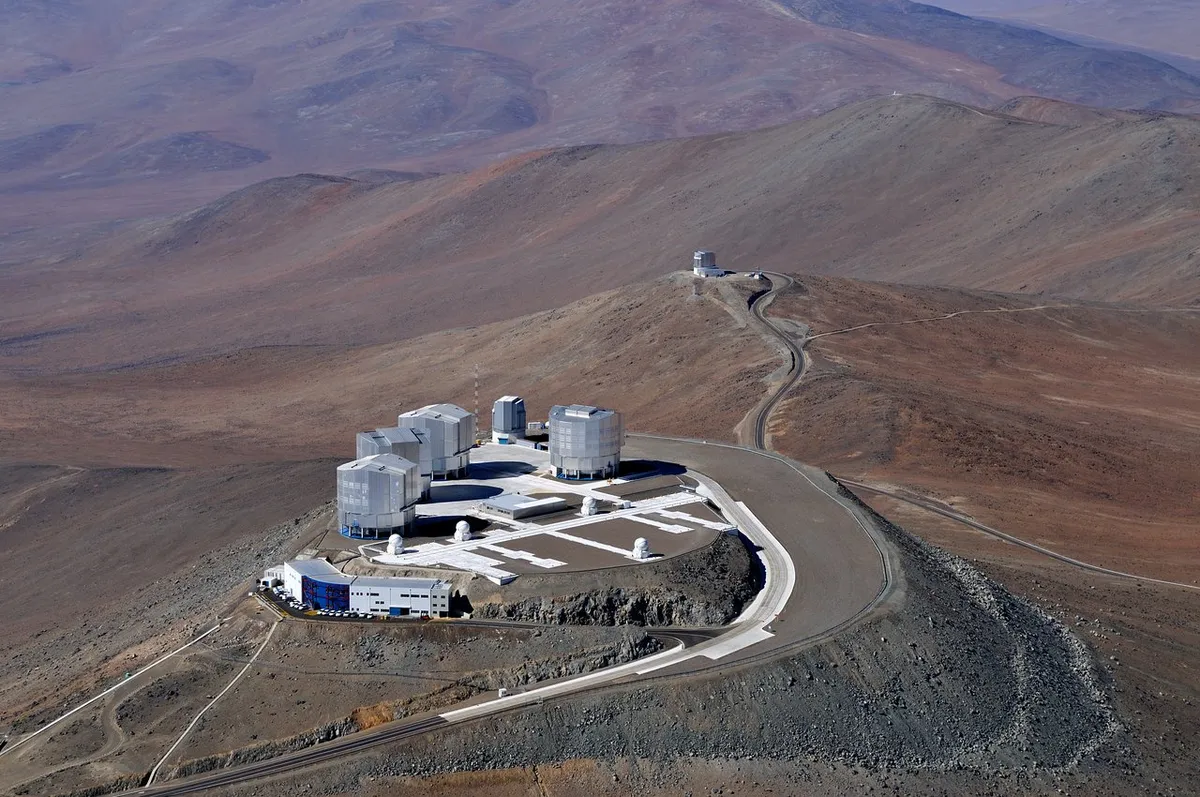Astronomers have captured the first ever image of a young star like our own Sun with two gas giant exoplanets in orbit around it. Until now, astronomers had only ever directly observed one planet orbiting a Sun-like star.
The image of TYC 8998-760-1, a star that is similar to the Sun and located about 300 lightyears away, was captured using the Very Large Telescope in the Chilean Atacama desert, which is operated by the European Southern Observatory.
It was taken by blocking the light from the star, which can be seen in the top left in the image above, using an instrument called a corongraph. This enabled the infrared light from the fainter planets to be detected.
Read more about exoplanets:
- Earth-sized exoplanet found around Sun-like star
- Interview: how the Nancy Grace Roman spacecraft will search for exoplanets
- A guide to the latest exoplanet-hunting missions
The bright and dark rings on the star are optical artefacts, and the planets can be seen as two bright dots in the bottom half of the image.
The news follows a revelation recently that the VLT had managed to captured a whole planetary system being born around a star.

The pair of exoplanets orbiting TYC 8998-760-1 are gas giants located about 160 and 320 times AU from the star (where 1 AU is the average distance between Earth and the Sun.
For comparison, fellow gas giants Jupiter and Saturn in our own Solar System are about 5 and 10 AU from the Sun. These two exoplanets are also much heavier, the innermost having 14 times Jupiter’s mass and the outermost 6 times.
The team of astronomers who imaged the system discovered it during their search for young, giant planets around stars like our Sun. TYC 8998-760-1 is just 17 million years old, much younger than the Sun, and can be found in the southern constellation of Musca (The Fly).
"Even though astronomers have indirectly detected thousands of planets in our galaxy, only a tiny fraction of these exoplanets have been directly imaged," says study co-author Matthew Kenworthy, Associate Professor at Leiden University.
Kenworthy says "direct observations are important in the search for environments that can support life."
The team plan to carry out further observations of the system with the upcoming Extremely Large Telescope and hope to decipher whether each exoplanet formed at its current distanced from the star, or whether they migrated from elsewhere.
Studying young Sun-like stars and the exoplanets in orbit around them gives astronomers the chance to learn more about how planetary systems form and develop over time, and could ultimately provide new clues as to the formation of our own Solar System.
“This discovery is a snapshot of an environment that is very similar to our Solar System, but at a much earlier stage of its evolution,” says Alexander Bohn, a PhD student at Leiden University, who led the new research.
Access the full paper at The Astrophysical Journal Letters.

